While both Kathryn and I had recovered from our illness by the time we left our rest-break in Bay View campsite near Napier, we were still drained by the ordeal. We looked forward to visiting Taupo and especially Rotorua which is known as the health centre of New Zealand thanks to its active geothermal nature. With a lighter event schedule for a few weeks we were also anticipating a bit of sightseeing here and there too.
We drove to Taupo under increasingly cloudy skies so we headed straight for our chosen campsite by the lake edge when we arrived and hoped for some clear weather the following day. Our wish was granted and we woke to a beautiful view across Lake Taupo to the snow covered peaks of the Tongariro National Park in the South West. We had to be in Rotorua that evening ready for an all-day event at Westbrook School the day after so we set off to explore the local area good and early.
- Tongariro across Taupo
- New Zealand know how to decorate their rubbish bins!
- Downstream of Huka Falls
Sadly it seems all of the areas geothermal pools are now pay-to-view. We had an old Lonely Planet guide which suggested a site called Craters of the Moon, owned by the DoC, but unfortunately that was now privately run too. There was however a road opposite the turning for the Craters which indicated Huka Falls. We went to investigate and were delighted by a spectacular sight. The Waikato River drains Lake Taupo and is New Zealand’s longest river. This river system provides approximately 15% of New Zealand’s electricity requirements. The falls have formed close to Lake Taupo where the river channel has had to cut through a tough chunk of granite which forces the previously wide and relatively gentle flow of the river in to a tight gorge. The fast churning flow this creates travels nearly 200 meters before plummeting the 9 meters of the falls and calming again, though as a rather more air-bubbly river which gives it its Maori name meaning ‘foam’. These falls which pass 200,000L of water per second are also the reason there are no eels in Lake Taupo – they can’t negotiate the fast falls and flow in the channel.
Our final bid at finding some free geothermal activity around Taupo took us down a lumpy gravel track. There we found a delightful café, campsite and a small number of farm animals at Wairakei Natural Thermal Valley which looks a very peaceful place to spend some time. Sadly the geothermal walk did have a fee, so we took some photos of the fantastic pig before setting off for Rotorua.
- Looking upstream on the bridge
- Looking downstream fom the bridge.
- Looking back at the spot the previous photo was taken
Rotorua is the most geothermally active region in New Zealand and you certainly notice it when you arrive. While obvious, it is thankfully not unpleasant or overwhelming. Our first day didn’t leave us much time to appreciate the area as we had 5 year groups to talk to at Westbrook School. We must say a quick congratulations to everyone involved with the school. It is one of the best behaved and friendly places we’ve been in all of our travels! Unfortunately, with being so busy there we completely forgot to take any photos!
The Rotorua YHA is doing a great job of putting us up, but we never turn down an invitation to stay with any of our event hosts when offered and we’re hugely grateful to Belinda McEwan who was our point of contact for our second Rotorua event, the Kiwi Conservation Club. Quite apart from having two of the most delightful children in existence, she very generously fed us roast lamb and preservative free beef sausages for the two nights we stayed. Her partner is a Maori chap called David who I hope forgives us for asking so many questions about the culture and history of the people. The KCC event was a great success with an activity session after our talk where the children made sharks from cardboard tubes. It was fantastic fun to see the variety and detail as they were created.
We had a look around Te Papaiouru Marae (A Marae is a Maori meeting house) and St. Faith’s Anglican Church opposite which has a window with Christ (wearing a Maori cloak) made to look like he’s walking on the water of the lake outside (sadly this photo didn’t come out well at all). When built, the bishop at the time ensured Maori designs and culture were included in the church – you can see traditional Maori weaving on the walls, and the pulpit is supported by Maori figures. Outside the church there is also a graveyard for the Maori battalion who fought in various wars.
- Marae
- the remains of an old Maori ocean-going canoe
- Springs can appear anywhere, anytime…
- Smoking cone!
We finish this blog with a day of raiding our savings and treating ourselves to a wonderful afternoon relaxing at the Polynesian Spa. A wide variety of treatments and pools allow for any experience you could wish for: a family spa pool, private pools, spa massages and mud treatments. Our particular favourite was the ‘Priest pool’ so called after the spring the water comes from. It’s quite acidic, supposedly very good for arthritis and rheumatism, but we especially enjoyed it as the temperature was ideal for us to stay in and it had the best views out over the steaming lake. Kathryn also braved the cold plunge pool while I shook my head in bemusement and stayed in the warm. I’ve tried that kind of thing before and it’s not my cup of tea!
After our disappointment trying to find Geothermal mud pools and similar to look at around Taupo, we’re pleased to report plenty of accessible sites in Rotorua, so we shall have pictures to share next time.


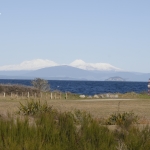
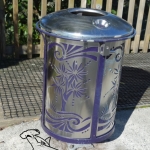


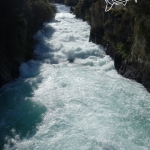

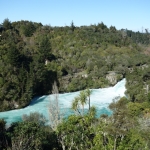


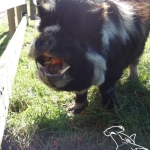







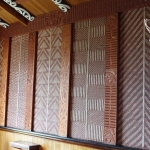



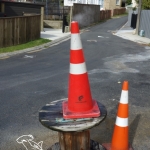

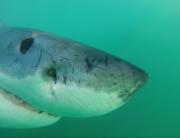













Follow Us